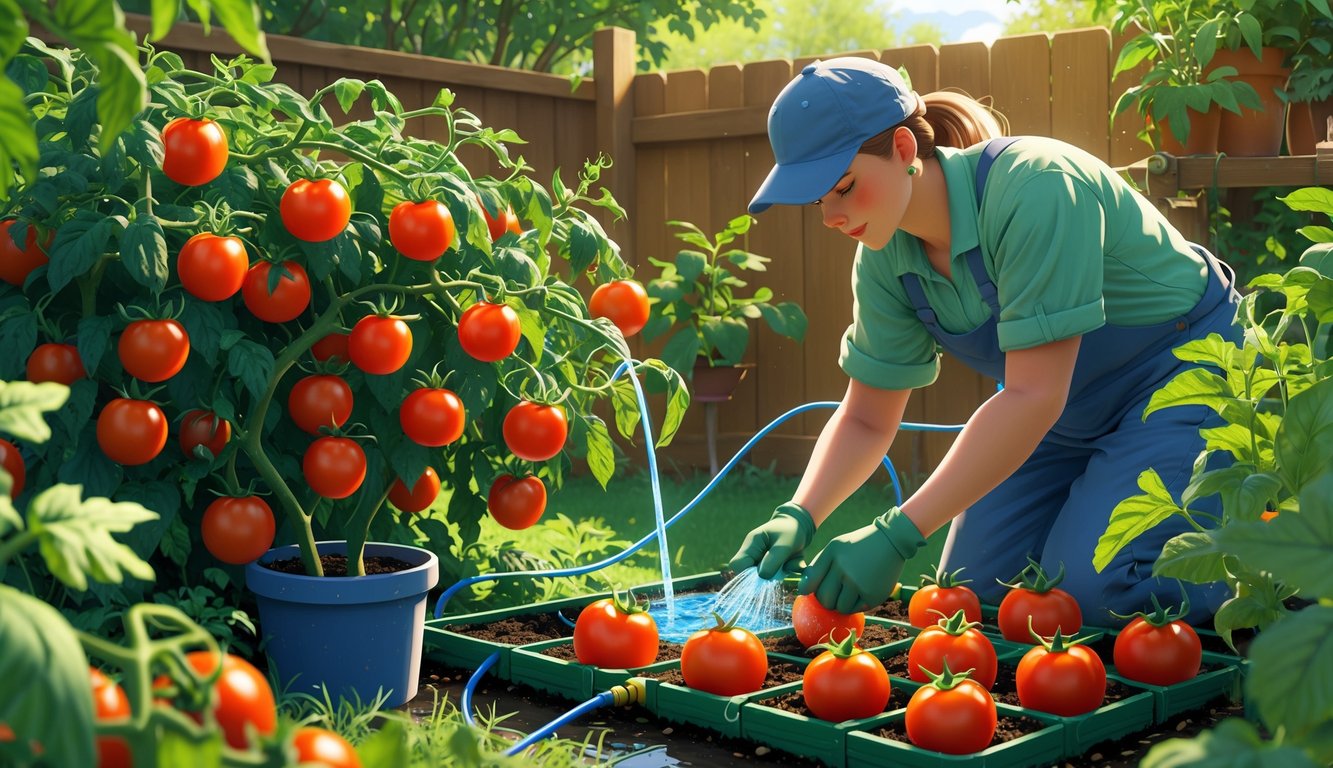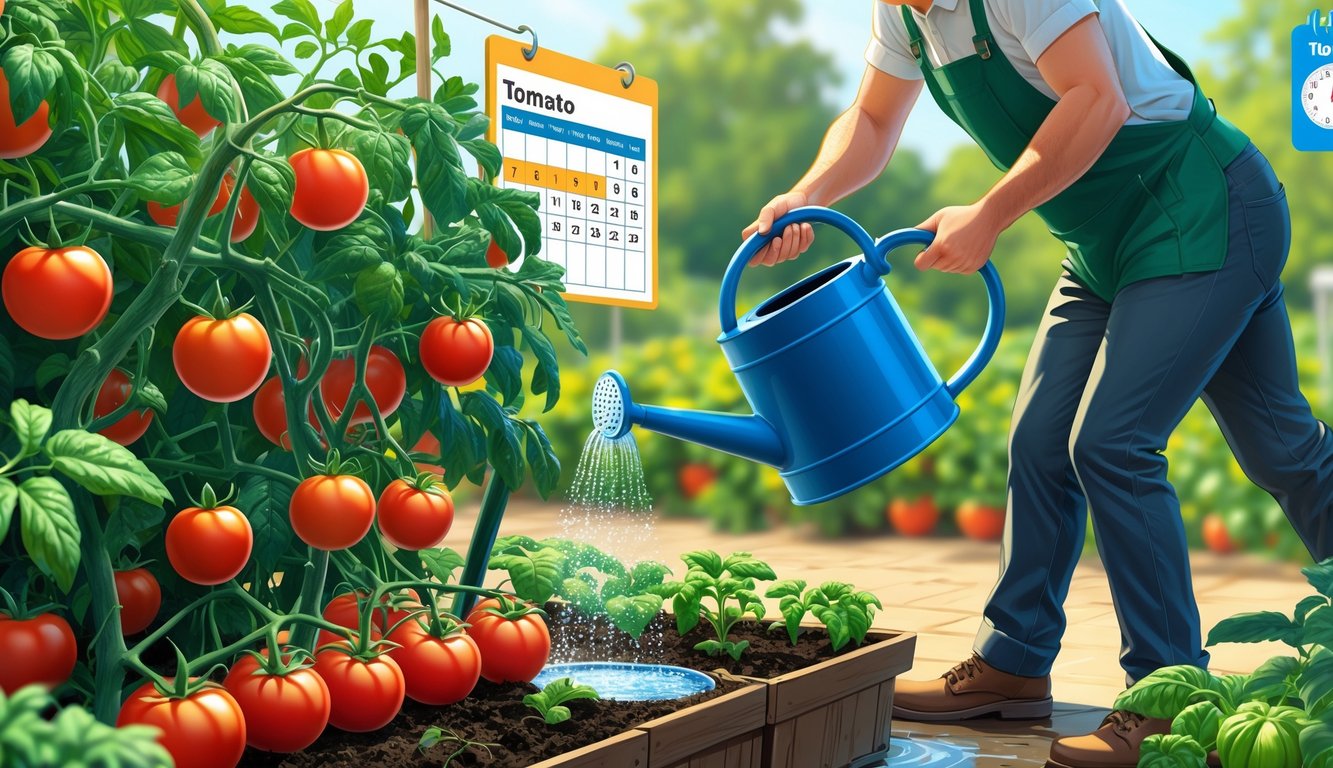
Setting Up for Success: Key Tools and Materials
I keep tweaking my setup, mostly because I’m stubborn and hate watching water disappear into mulch. What matters isn’t “how much” water, but whether your system lets you skip a day (or three) without the plants revolting. I need low-effort habits and gear, not more chores.
Choosing the Right Irrigation System
I’ve tried everything—hoses, guilt-tripping my kid, even letting the plants fend for themselves. (Spoiler: didn’t work.) Extension cords got muddy, and I was ready to give up. Friends love soaker hoses—just snake them under mulch, and it’s supposed to be foolproof. Except in clay soil, it’s a joke. Only drip irrigation really keeps things consistent. The University of California says drip lines save up to 50% water and cut down disease. That’s not nothing.
So whenever someone says “just water deeply,” I can’t help but laugh. The five-gallon bucket with a slow-wicking setup is clever for pots, but outside? Either struggle with patchy soaker hoses or get a real automatic drip system. Honestly, half the battle is setting something up that works even when I forget.
Best Materials for Watering Tomatoes
Mulch is another rabbit hole. Every gardening book screams “organic mulch!” but my straw bales turned into a mushroom farm last August. Wood chips last, but sometimes steal nitrogen, so my plants yellow halfway through summer. Plastic looks neat, but roots cook and yields drop.
What actually works for me? Layer of shredded bark or leaf mold, then straw or composted grass on top. Keeps things moist, no root rot, no slugs. Drip lines plus mulch = less weeding, more tomatoes. Unless my neighbor’s dog digs everything up, but that’s another rant. Skip gravel and straight hay unless you like headaches. For patios, self-wicking containers are decent. Every year I change my mind, and if anyone claims their method works everywhere, just smile and keep your receipt.
Building a Watering Schedule for Maximum Results

And here’s the real kicker—everyone wants a magic schedule, but I’ve never had two weeks the same. Timers and drip setups help, but there’s no autopilot. If you’re working late, good luck.
Determining the Right Watering Frequency
Last year, I tried sticking to this every-other-day watering schedule because, I don’t know, it sounded responsible? Spoiler: it was a trainwreck. Seedlings drooped, fruit split, and I got schooled by a guy who’s grown vegetables since before I was born—he just pokes the soil every morning. No calendar, just “how dry are the top two inches?” That’s it. I mean, who am I to argue with 35 years of muddy hands?
Everyone parrots “water in the morning,” like that’s the golden rule. Sure, roots drink up before the sun bakes everything, but does anyone actually enjoy getting up at 6am for tomatoes? And, okay, root depth is the real decider, not some arbitrary “twice a week” rule. Tiny transplants? They want the soil barely moist, sometimes daily. Big, fruiting plants? They need deeper, less frequent soaks—maybe three times a week, unless it rains, then who knows. Commercial growers? Apparently, they shoot for 1–2 inches per week, but I can’t measure that without a spreadsheet. My cousin swears by his drip irrigation timer and the old “finger test.” Tomatoes hate drama. Ignore hope. Trust the dirt.
Adapting to Weather Conditions
Weather apps lie. Clouds roll in, radar says rain, but my backyard stays bone dry. Hot, windy days? Soil dries out in hours; yesterday I dumped mulch everywhere just to keep my Roma seedlings from frying. Humidity spikes, and suddenly it’s like fungus Olympics—if you water the leaves, you’re basically inviting disaster, or so says every tomato disease guide.
Nothing stays the same, especially not in late summer. Schedules are a joke. I read this study (I think it was in the Journal of Horticultural Science? Or maybe it was a blog, whatever) that said fruit cracks if you let the soil dry out, then drown it. Makes sense, I guess. In drought, I’ve seen plants wilt right after I watered—apparently splitting the water into morning and afternoon helps, or maybe it’s just placebo. Cold snaps? Roots barely drink, so I end up poking the soil with a cheap meter, pretending I know what I’m doing. My garden’s microclimate is weird—one side bakes by the driveway, the other stays cool under the fence. Sometimes I just start over. Nothing like watching tomatoes rot because the rain decided to skip my yard.
Messy cheat sheet (because I always forget):
| Weather | Frequency Adjustments | Signs to Watch |
|---|---|---|
| Hot & Dry | Water more, mulch helps | Wilting, leaf curl |
| Cool & Rainy | Water less, check drainage | Yellow leaves on bottom |
| Humid | Only water soil, not leaves | Leaf spots |
| Windy | Water a bit extra | Droopy leaf edges |
I stick freezer labels to the hose with reminders. Looks dumb, but whatever—my tomatoes split less now.